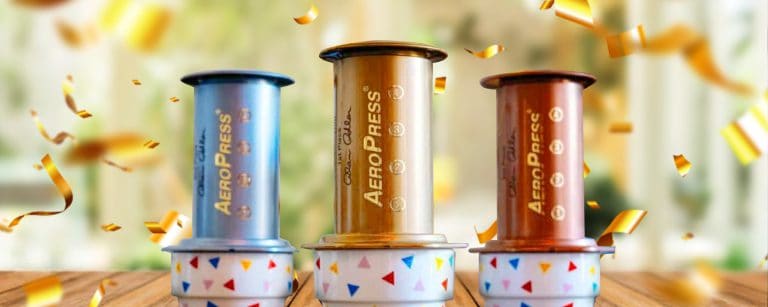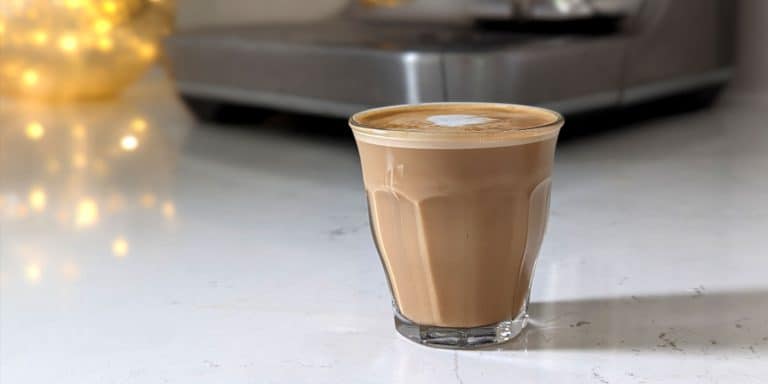How To Make Espresso Powder The Right Way
I’ve always had a strong passion for espresso. So when my wife and I tried our hands at baking, I knew we had to try using espresso powder as well.
After using it for cakes and even BBQ rubs, we’ve got the hang of making and using it.
In this article, I’ll fill you in on this versatile ingredient, so you’ll know exactly when and how to use espresso powder, and even how to make it.
What is Espresso Powder?
Espresso powder is very finely ground, dehydrated coffee beans. Its intense and complex flavor makes it perfect for adding some depth to chocolate-based desserts, baked goods, cakes, brownies, cookies, and even savory recipes like steak rubs.

Brewed grounds vs fresh beans?
Many online recipes state that using brewed coffee grinds is the basis for espresso powder. I’ve tried both, but I think using unbrewed coffee beans is better. When you think about it, brewing takes all of the flavor out of the beans and may add bitterness.
You might also be thinking: Can I drink espresso powder the way I use instant coffee?
No, you can’t dissolve espresso powder in water like you can do with instant coffee. They are totally different things. Espresso powder is made for the purpose of baking, often to enhance chocolate flavors. Instant coffee is for making coffee instantly 🙂
To help you have a better grasp of this ingredient, here’s how espresso powder is made:
- Grind freshly roasted coffee beans.
- You can use these grounds as is, or brew them and use them after brewing. You can make espresso or filter coffee, it doesn’t really matter. I like using unbrewed grinds better.
- Spread the coffee grounds on baking paper, and put it into your oven at its lowest temperature, at around 200°F (90°C). You want to dry the grounds, not bake them.
- Bake it for about 1-2 hours, checking it regularly. It should feel crunchy to the touch, and there should be no dampness.
- Gather the grounds, put them into a blender or coffee grinder, and blend them until you get a fine powder.
- Store in an airtight container.
It’s worth noting that you can make espresso powder from any type of coffee bean, but Arabica beans are best due to their slightly sweeter flavor profile, which can be felt even after brewing the grinds.
Robusta is more bitter by nature.

How to Make Espresso Powder
Ingredients
- Coffee grinds
Instructions
- Grind coffee beans to a fine consistency
- Spread the ground coffee on baking paper. You can use fresh or brewed grinds.
- Put it into your oven at 200°F (90°C), the lowest temperature.
- Dry out the grinds in the oven for about 1-2 hours, checking it regularly.
- Put the dry grounds into a grinder or blender, and grind/blend until you get a fine powder.
- Store in an airtight container.
Video
Notes
How to Use Espresso Powder
I’ve seen espresso powder used in so many creative ways. It pairs well with complementary ingredients such as dark chocolate, caramel, and nuts, as well as savory sauces.
Try adding a sprinkle of espresso powder to brownies or ice cream for a rich and decadent treat, or mix it into meat rubs or marinades for added depth of flavor in savory dishes.
Here are some of the popular recipes that use espresso powder:
- Mocha shortbread cookies
- Espresso Budini
- Coffee buttercream frosting
- Espresso steak rub
- Pumpernickel bread
- Irish cream cocktail
When using espresso powder for baking or cooking, it’s important to use the recommended amount based on the recipe. Typically, a teaspoon or two is enough to add depth and complexity without overwhelming other flavors. However, don’t be afraid to experiment with different amounts depending on your taste preferences.
Comparing Espresso Powder to Similar Products
Espresso powder can be easily confused with similar products like instant coffee or ground espresso. To clarify things, here’s the low-down on how it compares to these other commonly used ingredients:
Espresso Powder vs Instant Coffee
While both espresso powder and instant coffee powder are made from brewed coffee beans that have been dried and powdered, they differ in their strength and flavor profile. While instant coffee is meant to dissolve and make a coffee drink fast, espresso powder’s form makes it suitable for baking and cooking recipes where you want to enhance the richness and depth of flavors.
Espresso Powder vs Ground Espresso
Ground espresso is typically medium to dark roast coffee ground finely with a grinder to make it ideal for brewing with an espresso machine. The result is a brewed espresso shot you can drink straight or use as a base for various milk-based drinks like lattes or cappuccinos. Espresso powder is made from used ground espresso. it isn’t meant to be brewed again, but for incorporating into desserts, baked goods, or spice rubs.
Espresso Powder vs Cocoa Powder
Cocoa powder is another common ingredient often found alongside espresso powder in baking recipes. While both powders add depth and complexity to chocolate-based desserts, cocoa has a distinct chocolatey taste while espresso adds a subtle coffee flavor that enhances the flavor of chocolate. That being said, I honestly think that using both can create a delicious symphony of flavors (imagine chocolate-coated coffee beans) that really elevate any dessert to the next level. It’s like chocolate coffee but as food.
How Much Caffeine is in Espresso Powder?
Generally, a gram of espresso powder can contain 15 to 40mg of caffeine, meaning it can go higher than instant coffee’s 31.4mg per gram of coffee.
This is worth noting if you’re mindful about consuming 400mg of caffeine per day as the FDA advised. But you can also note that compared to how much instant coffee you use in a cup, you’ll most likely ingest less caffeine in a slice of pastry dusted with espresso powder.
How Will You Use It?
Espresso powder is a really versatile and delicious ingredient that can enhance the flavor of both sweet and savory dishes. Whether you’re an avid baker or simply looking to add some depth to your cooking, this concentrated coffee powder is definitely worth trying out.
I myself, can personally attest to the wonders of espresso powder. It has quickly become one of my go-to ingredients when baking pastries and creating BBQ rubs.
So if you haven’t tried it yet, I encourage you to give it a shot (or a sprinkle) and see how it elevates your dishes to new heights. Share your results in the comments below.






